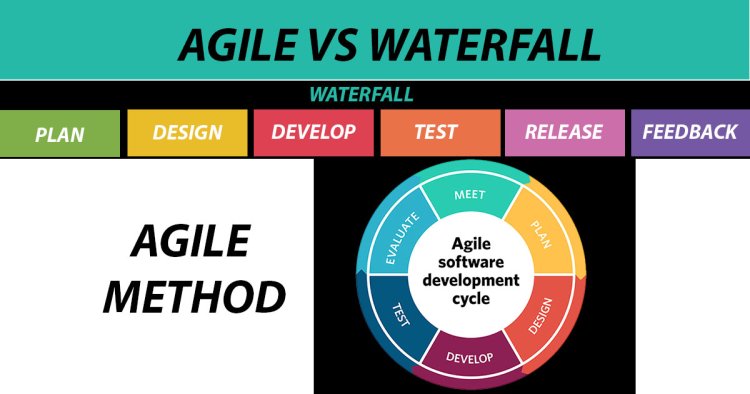Waterfall vs. Agile: A Descriptive Comparison of Project Management Methods

In the ever-evolving landscape of project management, selecting the right methodology is vital for the successful execution of any project. Two prevalent approaches, Waterfall and Agile methodologies, have garnered widespread use across industries. This descriptive comparison aims to shed light on the fundamental characteristics of both methodologies, empowering project teams to make well-informed decisions based on their project's unique requirements.
Waterfall Methodology: A Sequential Journey
The Waterfall methodology follows a linear and sequential approach to project management. It divides the project into distinct phases, where each phase must be completed before moving on to the next. The key stages typically include requirements gathering, design, implementation, testing, deployment, and maintenance. Waterfall projects rely on comprehensive upfront planning and documentation to guide the entire development process.
Agile Methodology: Embracing Flexibility and Collaboration
The Agile methodology, in contrast, adopts an iterative and incremental approach to project management. It emphasizes adaptability and customer collaboration throughout the development process. Agile projects are divided into short cycles called sprints, during which teams deliver functional increments of the product. Regular customer feedback is sought to refine the product further and respond to changing requirements.
Project Complexity and Scope:
Waterfall is suitable for projects with well-defined, stable requirements and minimal changes expected.
Agile is ideal for projects with evolving requirements and a high level of uncertainty.
Customer Involvement:
Waterfall may involve customers only at the end of the project, potentially leading to misalignments with expectations.
Agile encourages continuous customer involvement, ensuring the delivered product meets customer needs.
Predictability and Control:
Waterfall offers better predictability in terms of timeline and cost, making it suitable for projects with strict budget and time constraints.
Agile provides flexibility but may be less predictable in terms of delivery dates and final cost due to evolving requirements.
Team Structure and Collaboration:
Waterfall projects may suit hierarchical organizations with well-defined roles and responsibilities.
Agile requires a more collaborative, self-organized, and cross-functional team structure.
Waterfall and Agile methodologies present distinct project management approaches, each with its strengths and applicability. The choice between the two depends on various factors such as project complexity, customer involvement, predictability requirements, and team dynamics. Understanding the fundamental principles of both methodologies empowers project teams to adapt and choose the most suitable approach, ensuring successful project delivery and customer satisfaction.
What's Your Reaction?















